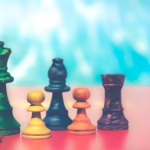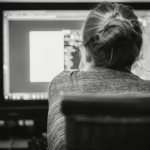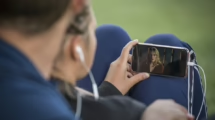Decoding Prejudices: Their Meaning and How to Overcome Them
Prejudice, a pervasive and insidious phenomenon, has plagued human societies for millennia. It exists in various forms, subtly shaping our perceptions, interactions, and even the structures of our communities. To combat this complex challenge, it is essential to delve into the meaning of prejudice, understand its origins and manifestations, and explore effective strategies for overcoming it. This article aims to provide a comprehensive analysis of prejudice, encompassing its psychological underpinnings, social consequences, and practical approaches to fostering a more equitable and inclusive world.
Part I: Understanding Prejudice: Definition, Roots, and Manifestations
1. Defining Prejudice: A Multifaceted Concept
Prejudice, at its core, is a preconceived judgment or opinion, often negative, that is not based on reason or actual experience.[modern_footnote: Allport, G. W. (1954). The nature of prejudice. Addison-Wesley.] It is a multifaceted concept, encompassing a range of cognitive, affective, and behavioral components. While the term is often used interchangeably with related concepts like stereotypes and discrimination, it is crucial to distinguish between them.
-
Stereotypes: These are generalized beliefs about a group of people, often oversimplified and inaccurate. They can be positive, negative, or neutral, but they contribute to prejudice by creating biased expectations. For example, the stereotype that all members of a particular ethnic group are lazy or that all women are emotional.
-
Discrimination: This refers to the unfair or prejudicial treatment of individuals or groups based on their membership in a particular category. Discrimination is the behavioral expression of prejudice, translating biased attitudes into concrete actions, such as denial of opportunities, verbal abuse, or even violence.
Prejudice, therefore, is the attitudinal foundation upon which stereotypes and discrimination are built. It encompasses the negative feelings, beliefs, and predispositions that fuel biased behavior. This attitudinal component makes prejudice particularly resistant to change, as it is often deeply ingrained in an individual’s worldview.
2. The Psychological Roots of Prejudice: Nature and Nurture
The origins of prejudice are complex and multifaceted, stemming from both inherent psychological tendencies and learned social influences. Understanding these roots is essential for developing effective strategies to combat prejudice.
-
Evolutionary Psychology: Some researchers argue that prejudice has evolutionary roots, suggesting that it may have provided a survival advantage in ancestral environments. In-group preference, the tendency to favor members of one’s own group, may have facilitated cooperation and resource sharing within communities. Out-group aversion, the tendency to distrust or fear those perceived as different, may have protected groups from potential threats or competition. However, these evolutionary tendencies do not justify prejudice in modern society, as they are often applied inappropriately and lead to harmful consequences.
-
Social Identity Theory: This theory proposes that individuals derive a sense of self-esteem and belonging from their membership in social groups.[modern_footnote: Tajfel, H., & Turner, J. C. (1979). An integrative theory of intergroup conflict. In W. G. Austin & S. Worchel (Eds.), The social psychology of intergroup relations (pp. 33-47). Brooks/Cole.] People tend to categorize themselves and others into “in-groups” and “out-groups.” To enhance their self-esteem, individuals may exhibit in-group bias, favoring their own group and denigrating out-groups. This process can lead to prejudice and discrimination, as individuals strive to maintain a positive social identity.
-
Cognitive Processes: Certain cognitive processes contribute to the formation and maintenance of prejudice. These include:
- Categorization: The human mind naturally categorizes information to simplify the world. While categorization is essential for cognitive efficiency, it can lead to overgeneralization and stereotyping.
- Confirmation Bias: People tend to seek out and interpret information that confirms their existing beliefs, even if that information is inaccurate or incomplete. This bias can reinforce prejudice by selectively attending to evidence that supports negative stereotypes.
- Attributional Bias: People tend to attribute the behavior of out-group members to their inherent characteristics, while attributing the behavior of in-group members to situational factors. This bias can lead to negative evaluations of out-groups, even when their behavior is similar to that of in-groups.
-
Social Learning Theory: Prejudice can also be learned through social interactions and observation. Children learn prejudiced attitudes from their parents, peers, and the media. Exposure to biased language, stereotypes, and discriminatory behavior can shape a child’s perceptions and beliefs about different groups.
3. Manifestations of Prejudice: From Subtle Biases to Overt Hostility
Prejudice manifests in a variety of ways, ranging from subtle biases to overt hostility. These manifestations can have profound consequences for individuals and communities.
-
Explicit Prejudice: This refers to consciously held and openly expressed prejudiced attitudes. Individuals with explicit prejudice are aware of their biases and may openly express them in discriminatory behavior. Examples include openly racist remarks, discriminatory hiring practices, or acts of violence motivated by hate.
-
Implicit Prejudice: This refers to unconscious or automatic biases that influence behavior without conscious awareness.[modern_footnote: Greenwald, A. G., McGhee, D. E., & Schwartz, J. L. (1998). Measuring individual differences in implicit cognition: The Implicit Association Test. Journal of Personality and Social Psychology, 74(6), 1464-1480.] Implicit prejudice is often measured using implicit association tests (IATs), which assess the strength of associations between concepts (e.g., race) and evaluations (e.g., good/bad). Individuals may not be aware of their implicit biases, but these biases can influence their decisions and interactions in subtle ways. For example, a hiring manager may unconsciously favor candidates of a particular race, even if they consciously believe in equal opportunity.
-
Microaggressions: These are subtle, often unintentional, expressions of prejudice that communicate hostile, derogatory, or negative messages to individuals from marginalized groups.[modern_footnote: Sue, D. W., Capodilupo, C. M., Torino, G. C., Bucceri, J. M., Holder, A. M. B., Nadal, K. L., & Esquilin, M. (2007). Racial microaggressions in everyday life: Implications for clinical practice. American Psychologist, 62(4), 271-286.] Microaggressions can take various forms, including:
- Microassaults: Explicit racial derogations characterized primarily by a verbal or nonverbal attack meant to hurt the intended victim through name-calling, avoidance, or intentional discriminatory actions.
- Microinsults: Communications that convey rudeness and insensitivity and demean a person’s racial heritage or identity.
- Microinvalidations: Communications that negate or nullify the psychological thoughts, feelings, or experiential reality of a person of color.
While microaggressions may seem trivial on their own, their cumulative effect can be significant, leading to feelings of alienation, stress, and psychological distress for marginalized individuals.
- Systemic Prejudice: This refers to prejudice that is embedded in the structures and institutions of society. Systemic prejudice can manifest in various forms, including:
- Institutional Racism: Policies and practices within institutions that systematically disadvantage individuals from particular racial groups. Examples include discriminatory lending practices, disparities in school funding, and racial profiling by law enforcement.
- Sexism: Prejudice or discrimination based on sex, often manifesting in unequal pay, limited career opportunities for women, and the perpetuation of gender stereotypes.
- Homophobia/Transphobia: Prejudice or discrimination against individuals based on their sexual orientation or gender identity. This can manifest in denial of rights, social stigma, and violence.
Systemic prejudice is often subtle and difficult to detect, but its impact can be far-reaching, perpetuating inequality and limiting opportunities for marginalized groups.
Part II: The Consequences of Prejudice: Individual and Societal Impacts
Prejudice has devastating consequences for individuals, communities, and society as a whole. Understanding these consequences is crucial for motivating efforts to combat prejudice.
1. Individual Impacts: Psychological, Emotional, and Physical Health
Prejudice can have profound negative impacts on the psychological, emotional, and physical health of individuals who are targeted by it.
-
Psychological Distress: Experiencing prejudice can lead to feelings of stress, anxiety, depression, and low self-esteem. Constant exposure to negative stereotypes and discriminatory behavior can erode an individual’s sense of self-worth and belonging.
-
Internalized Oppression: Individuals who are targets of prejudice may internalize negative stereotypes and beliefs about their own group. This can lead to self-doubt, shame, and a sense of powerlessness. For example, a woman who is constantly told that she is not as capable as men may internalize this belief and limit her own aspirations.
-
Mental Health Disorders: Research has shown that experiencing prejudice is associated with an increased risk of mental health disorders, such as anxiety disorders, mood disorders, and post-traumatic stress disorder (PTSD).[modern_footnote: Williams, D. R., Neighbors, H. W., & Jackson, J. S. (2003). Racial/ethnic discrimination and health: Findings from community studies. American Journal of Public Health, 93(2), 200-208.] The chronic stress and trauma associated with prejudice can disrupt the brain’s stress response system and increase vulnerability to mental illness.
-
Physical Health Problems: Prejudice can also have negative impacts on physical health. Chronic stress associated with experiencing prejudice can weaken the immune system, increase blood pressure, and contribute to cardiovascular disease. Research has also shown that prejudice is associated with increased rates of chronic diseases, such as diabetes and cancer.
-
Reduced Life Expectancy: Studies have shown that individuals who experience high levels of discrimination have shorter life expectancies than those who experience less discrimination. This disparity is likely due to the cumulative effects of stress, poor health behaviors, and limited access to healthcare.
2. Societal Impacts: Inequality, Conflict, and Instability
Prejudice has far-reaching consequences for society as a whole, contributing to inequality, conflict, and instability.
-
Economic Inequality: Prejudice can limit opportunities for marginalized groups, leading to economic inequality. Discriminatory hiring practices, unequal access to education and housing, and biased lending practices can prevent individuals from achieving their full economic potential.
-
Social Stratification: Prejudice can reinforce social hierarchies and create divisions within society. When certain groups are consistently marginalized and denied opportunities, it can lead to a rigid social structure characterized by inequality and limited mobility.
-
Intergroup Conflict: Prejudice is a major driver of intergroup conflict. When groups perceive each other as threats or competitors, it can lead to hostility, violence, and even war.
-
Political Instability: Prejudice can undermine democracy and political stability. When certain groups are denied their rights or excluded from the political process, it can lead to social unrest and political instability.
-
Erosion of Social Cohesion: Prejudice erodes social cohesion by creating divisions and distrust among different groups. When people feel that they are not treated fairly or that their voices are not heard, it can lead to feelings of alienation and disengagement.
-
Reduced Innovation and Creativity: Prejudice can stifle innovation and creativity by limiting the diversity of perspectives and ideas. When certain groups are excluded from the workforce or the creative process, it can limit the range of potential solutions and innovations.
3. Examples of Devastating Consequences throughout History
Throughout history, prejudice has been a driving force behind some of the most horrific events, including:
-
The Holocaust: The systematic persecution and extermination of Jews, Roma, and other groups by the Nazi regime was fueled by virulent anti-Semitism and other forms of prejudice.
-
The Rwandan Genocide: The mass slaughter of Tutsi people by Hutu extremists in Rwanda in 1994 was driven by ethnic hatred and political manipulation.
-
The Transatlantic Slave Trade: The forced transportation and enslavement of millions of Africans was justified by racist ideologies that dehumanized people of African descent.
-
The Jim Crow Era: The system of racial segregation and discrimination in the Southern United States after the Civil War was based on deeply ingrained racist beliefs and attitudes.
These examples serve as stark reminders of the devastating consequences of prejudice and the importance of actively combating it.
Part III: Overcoming Prejudice: Strategies for Individual and Societal Change
Combating prejudice requires a multi-faceted approach that addresses both individual attitudes and systemic structures. This section explores various strategies for overcoming prejudice at both the individual and societal levels.
1. Individual Strategies: Fostering Empathy, Education, and Self-Reflection
Individual efforts are crucial for dismantling prejudice and promoting tolerance. These efforts can focus on fostering empathy, education, and self-reflection.
-
Developing Empathy: Empathy, the ability to understand and share the feelings of others, is a powerful tool for combating prejudice. By putting oneself in the shoes of someone who is targeted by prejudice, it becomes easier to recognize the harm that it causes and to develop a sense of compassion.
- Perspective-Taking: Actively trying to understand the experiences and perspectives of people from different backgrounds can help to break down stereotypes and promote empathy.
- Active Listening: Listening attentively to others, without interrupting or judging, can help to build trust and understanding.
- Storytelling: Sharing personal stories and experiences can humanize people from different groups and create connections that transcend differences.
-
Education and Awareness: Educating oneself about the history and impact of prejudice is essential for understanding its roots and manifestations. Learning about different cultures and perspectives can broaden one’s understanding of the world and challenge stereotypes.
- Reading Books and Articles: Reading books and articles about prejudice, discrimination, and social justice can provide valuable insights into the issues.
- Watching Documentaries and Films: Documentaries and films can offer powerful portrayals of the lived experiences of people from marginalized groups.
- Attending Workshops and Seminars: Workshops and seminars on diversity and inclusion can provide practical tools and strategies for combating prejudice.
-
Self-Reflection and Implicit Bias Awareness: Examining one’s own biases and prejudices is a crucial step in overcoming them. Everyone holds implicit biases, unconscious attitudes and beliefs that can influence our behavior without our awareness. By becoming aware of these biases, we can begin to challenge them and work to mitigate their impact.
- Taking Implicit Association Tests (IATs): IATs can help to reveal unconscious biases that individuals may not be aware of.
- Journaling and Self-Assessment: Reflecting on one’s own thoughts, feelings, and behaviors can help to identify patterns of bias.
- Seeking Feedback from Others: Asking trusted friends, family members, or colleagues for feedback on one’s behavior can provide valuable insights into potential biases.
-
Challenging Stereotypes and Prejudiced Remarks: Speaking out against stereotypes and prejudiced remarks, even when it is uncomfortable, can help to create a more inclusive environment. By challenging these attitudes, we can send a message that prejudice is not acceptable.
- Educating Others: Sharing information about the harmful effects of prejudice can help to change attitudes and beliefs.
- Using Humor: Humor can be an effective way to defuse tense situations and challenge prejudiced remarks.
- Reporting Incidents of Discrimination: Reporting incidents of discrimination to the appropriate authorities can help to hold perpetrators accountable.
-
Building Relationships with People from Different Backgrounds: Interacting with people from different backgrounds can help to break down stereotypes and promote understanding. Building relationships with people who are different from oneself can challenge preconceived notions and foster empathy.
- Joining Diverse Organizations: Joining organizations that are committed to diversity and inclusion can provide opportunities to meet people from different backgrounds.
- Volunteering in Diverse Communities: Volunteering in communities that are different from one’s own can provide valuable insights into the challenges and opportunities faced by marginalized groups.
- Traveling and Exploring Different Cultures: Traveling and exploring different cultures can broaden one’s understanding of the world and challenge stereotypes.
2. Societal Strategies: Promoting Diversity, Equity, and Inclusion
Combating prejudice requires systemic change that promotes diversity, equity, and inclusion in all aspects of society.
-
Promoting Diversity in Education, Employment, and Housing: Creating diverse and inclusive environments in education, employment, and housing is essential for breaking down stereotypes and promoting understanding.
- Affirmative Action Policies: Affirmative action policies can help to ensure that marginalized groups have equal access to opportunities.
- Diversity Training Programs: Diversity training programs can help to raise awareness about prejudice and promote inclusive behaviors.
- Fair Housing Laws: Fair housing laws can help to prevent discrimination in housing and ensure that everyone has access to safe and affordable housing.
-
Enacting and Enforcing Anti-Discrimination Laws: Anti-discrimination laws are essential for protecting marginalized groups from prejudice and discrimination. These laws should be enforced vigorously to hold perpetrators accountable and send a message that discrimination is not acceptable.
-
Addressing Systemic Inequalities: Addressing systemic inequalities in areas such as education, healthcare, and criminal justice is crucial for creating a more equitable society.
- Investing in Education: Investing in education can help to close achievement gaps and provide marginalized groups with the skills and knowledge they need to succeed.
- Improving Access to Healthcare: Improving access to healthcare can help to reduce health disparities and ensure that everyone has access to quality medical care.
- Reforming the Criminal Justice System: Reforming the criminal justice system can help to reduce racial bias and ensure that everyone is treated fairly under the law.
-
Promoting Inclusive Media Representation: The media plays a powerful role in shaping perceptions and attitudes. Promoting inclusive media representation can help to challenge stereotypes and promote understanding.
- Supporting Diverse Voices: Supporting diverse voices in the media can help to ensure that a wider range of perspectives are represented.
- Challenging Stereotypical Portrayals: Challenging stereotypical portrayals of marginalized groups can help to break down negative stereotypes.
- Promoting Positive Role Models: Promoting positive role models from marginalized groups can help to inspire and empower others.
-
Encouraging Intergroup Dialogue and Collaboration: Creating opportunities for people from different groups to interact and collaborate can help to break down barriers and build trust.
- Community Forums: Community forums can provide a space for people from different backgrounds to discuss important issues and find common ground.
- Intergroup Projects: Intergroup projects can provide opportunities for people from different groups to work together towards a common goal.
- Cross-Cultural Exchange Programs: Cross-cultural exchange programs can provide opportunities for people to learn about different cultures and build relationships with people from different backgrounds.
-
Teaching Critical Thinking Skills: Teaching critical thinking skills can help people to evaluate information objectively and resist manipulation. Critical thinking skills are essential for identifying bias and challenging prejudice.
- Media Literacy Education: Media literacy education can help people to critically evaluate media messages and identify bias.
- Logical Reasoning Skills: Teaching logical reasoning skills can help people to identify flawed arguments and resist manipulation.
- Research Skills: Teaching research skills can help people to find accurate information and challenge misinformation.
Part IV: Conclusion: A Call to Action for a More Equitable Future
Prejudice is a complex and pervasive problem that requires a sustained and multi-faceted effort to overcome. By understanding the meaning of prejudice, its roots, and its consequences, we can begin to develop effective strategies for combating it. Individual efforts to foster empathy, education, and self-reflection are crucial for dismantling prejudice at the personal level. Systemic changes that promote diversity, equity, and inclusion are essential for creating a more just and equitable society.
Combating prejudice is not simply a matter of being tolerant or accepting of differences. It requires actively challenging stereotypes, speaking out against discrimination, and working to dismantle systemic inequalities. It requires a commitment to creating a society where everyone has the opportunity to reach their full potential, regardless of their race, ethnicity, gender, sexual orientation, or any other characteristic.
The journey towards a more equitable future will not be easy. It will require courage, perseverance, and a willingness to confront difficult truths. But the rewards of a society free from prejudice are immeasurable. A society where everyone is treated with dignity and respect, where opportunities are available to all, and where differences are celebrated as a source of strength. This is the vision that should guide our efforts to decode and overcome prejudice. Let us all commit to working towards a future where prejudice is a relic of the past, and where all people can live together in peace and harmony. The task is daunting, but the goal is worth fighting for. Only through sustained effort and unwavering commitment can we hope to create a world free from the insidious grip of prejudice.

























Add Comment